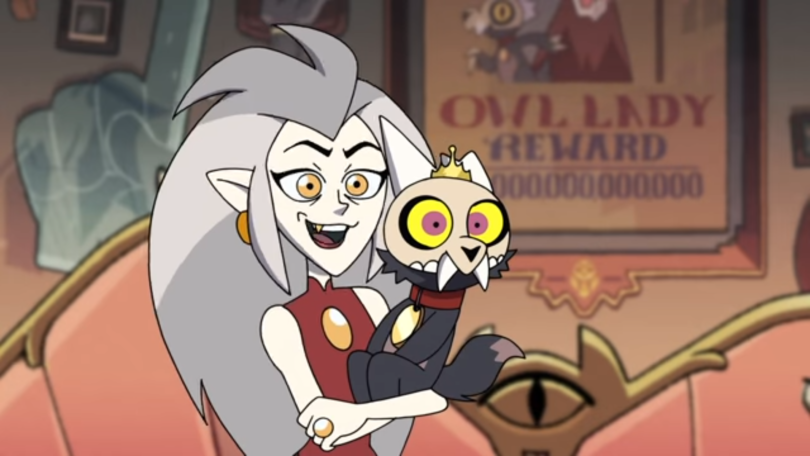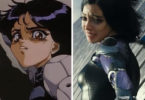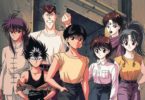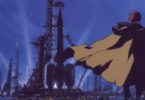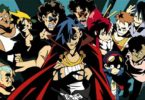Yes, I know this blog of mine is called Who Cares About Anime, but I just had to say a few words about Disney’s recent gem, The Owl House (2020–). In the spirit of another Disney Television Animation series, Amphibia (2019–), a young girl is accidentally transported to a magical world where she encounters strange creatures, exotic locales, and ultimately, dear friends. Whereas Matt Braly’s show follows a Thai-American girl as its protagonist, The Owl House features a Dominican-American named Luz Noceda as its heroine. Executive producer Dana Terrace has stated that artist and consultant Luz Batista is the real-life inspiration for much of the character’s background and personality.
And speaking of inspirations, Terrace herself has been very forthcoming with many of her own creative influences which range from heavyweight authors like J. R. R. Tolkien, Ursula K. Le Guin, and Isaac Asimov to recent franchises like Pokémon and various RPGs. The title of the first episode “A Lying Witch and a Warden” is surely a nod to C.S. Lewis’ The Lion, the Witch, and the Wardrobe (1950), as is the now-common premise of inadvertently stumbling into another world. Whether it’s adapting Lewis Carroll’s Alice’s Adventures in Wonderland (1895) or Edgar Rice Burroughs’ A Princess of Mars (1912), Disney certainly has ample experience with tales of this nature; and the isekai genre is quite popular in Japanese media at the moment, lending to a global appeal for consumers and business entities alike.
This creative cross-pollination is never a one-sided street, but in the case of The Owl House there are some fun connections (be they coincidental or otherwise). As Terrace has stated, anime was hugely influential in her younger years—in particular, Tenchi Muyo! (1992–93), which aired on a popular block of programming in the U.S. circa 2000. The witch Eda’s design, back story, and personality are all wonderfully reminiscent of the demonic alien Ryoko, who also had a penchant not only for losing body parts, but for being wanted criminally by authorities and romantically by men! Both larger-than-life ladies also serve as a gateway for an unsuspecting young person’s journey into a larger world (Wendie Malick’s commendable performance is comparable to English-dub actress Petrea Burchard’s as well).
The co-creator and director of the original Tenchi Muyo! OVA, Hiroki Hayashi, was himself inspired by Burroughs’ works like A Princess of Mars (as evidenced more so by his subsequent original series, El-Hazard: The Magnificent World (1995–96), which may have unintentionally spawned the modern isekai craze); furthermore, the screenwriter Naoko Hasegawa continued the storyline in her own set of novels, wherein she utilizes concepts and jargon pioneered by aforementioned Le Guin (thus a likely inspiration for Hasegawa herself, too). And today, Terrace continues this noble tradition in the spirit of Carroll and Burroughs, of Tolkien and Lewis, and of Hayashi and Hasegawa. The Owl House is greater than the sum of its parts: its magical world and notable characters make for a truly unique work appealing to young children of today and the youth of yesteryear.
The Owl House is now airing on the Disney Channel, and has been confirmed for an eventual second season. It will also be available on Disney+ and other online outlets like iTunes. The first episode is conveniently on YouTube, so even folks like me without cable can dive in and promptly get addicted!
As a Hispanic, nerdy kid of the same generation who also grew up on a strange diet of Tolkien, Asimov, and anime on TV, I’d like to conclude with a special thank-you to Dana Terrace for pulling this off. It is an extraordinary accomplishment, and testament to what our generation is capable of creating now that we’re behind the wheel of animated productions in places where we too used to watch cartoons and escape to other worlds, if only for a little while.
This one’s for the nineties kids, and all the loveable misfits of every era!
– J. G. Lobo
© 2020 (text)

